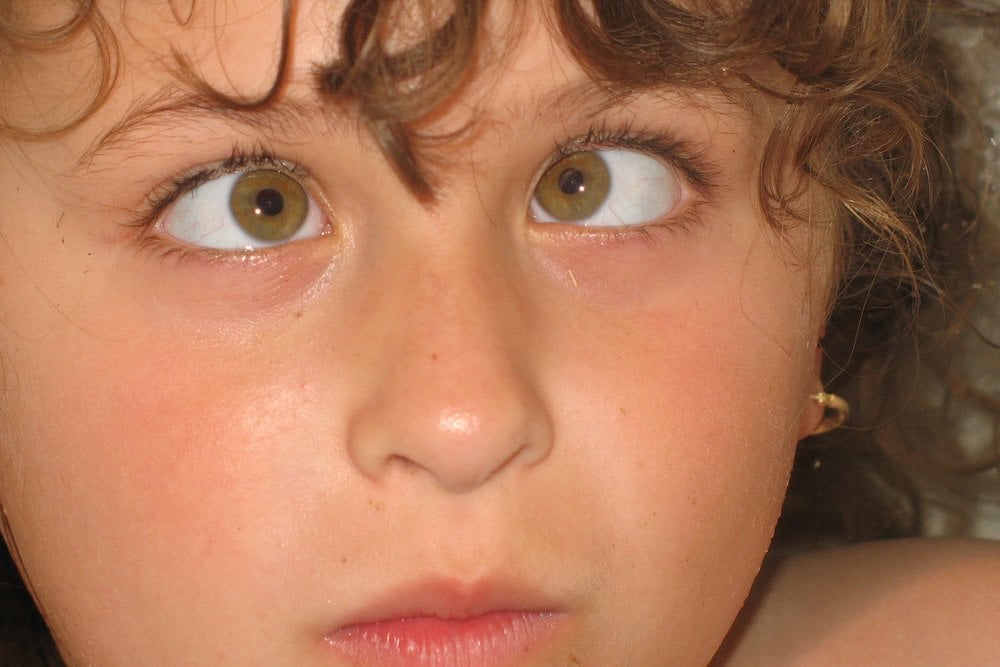 Source: bing.com
Source: bing.comAs a new parent, it’s natural to worry about your baby’s health and development. One common concern is whether your baby could develop cross eye, also known as strabismus. But what exactly is cross eye, and what causes it? In this article, we’ll explore the causes, symptoms, and treatment options for cross eye in babies.
Table of Contents
What is Cross Eye?
Cross eye is a condition where the eyes are not properly aligned. Instead of looking in the same direction, one eye may look straight ahead while the other eye turns inward, outward, upward, or downward. This misalignment can cause the brain to receive two different images, which can lead to double vision, poor depth perception, and other visual problems.
Can Babies Develop Cross Eye?
Yes, babies can develop cross eye. In fact, it’s estimated that 4% of children under the age of six have some form of strabismus. While some babies are born with cross eye, others may develop it later on as their eyesight and brain continue to develop.
What Causes Cross Eye in Babies?
There are several factors that can contribute to cross eye in babies:
- Eye muscle imbalance: Cross eye can occur when there is a weakness or imbalance in the muscles that control eye movement.
- Refractive errors: If a baby has a significant refractive error (such as nearsightedness, farsightedness, or astigmatism), it can cause the eyes to become misaligned.
- Genetics: Cross eye can run in families, so if a parent or sibling has strabismus, a baby may be more likely to develop it.
- Neurological conditions: In rare cases, cross eye can be caused by neurological conditions such as cerebral palsy or brain tumors.
What are the Symptoms of Cross Eye in Babies?
The most obvious symptom of cross eye is when one eye appears to be looking in a different direction than the other eye. However, there are other signs that can indicate cross eye in babies:
- Eye fatigue: A baby with cross eye may tire easily or rub their eyes frequently.
- Head tilting: In an effort to see better, a baby with cross eye may tilt their head to one side.
- Difficulty focusing: Cross eye can make it difficult for a baby to focus on objects or follow them with their eyes.
- Poor depth perception: Because cross eye can affect depth perception, a baby with this condition may have trouble judging distances.
How is Cross Eye Diagnosed?
If you suspect that your baby has cross eye, it’s important to have them evaluated by an eye doctor. The doctor will perform a comprehensive eye exam, which may include:
- Visual acuity test: This test measures how well your baby can see at different distances.
- Eye movement test: The doctor will check how well your baby’s eyes move in different directions.
- Cover test: This test involves covering one eye at a time to see if the other eye moves to take over.
- Pupil reaction test: The doctor will check how your baby’s pupils respond to light.
How is Cross Eye Treated?
The treatment for cross eye in babies depends on the underlying cause and the severity of the condition. Some common treatment options include:
- Glasses: If a baby has a refractive error that is causing cross eye, they may benefit from glasses.
- Eye patching: Covering the stronger eye with a patch can help strengthen the weaker eye and improve alignment.
- Eye exercises: Certain eye exercises can help improve eye muscle strength and coordination.
- Surgery: In some cases, surgery may be necessary to correct the misalignment of the eyes.
It’s important to note that early detection and treatment is key when it comes to cross eye in babies. If left untreated, cross eye can lead to permanent vision problems and even blindness.
The Bottom Line
While the thought of your baby developing cross eye can be scary, it’s important to remember that this condition is treatable. By staying vigilant and seeking prompt medical attention if you suspect your baby has cross eye, you can help ensure they receive the care they need to thrive.
Frequently Asked Questions
Q: Is cross eye in babies always a cause for concern?
A: While cross eye should always be evaluated by an eye doctor, not all cases are serious. In some cases, the misalignment may be temporary and resolve on its own.
Q: Can cross eye be prevented?
A: There is no guaranteed way to prevent cross eye in babies, but early detection and treatment can help prevent the condition from causing long-term vision problems.
Q: Can cross eye be corrected without surgery?
A: In some cases, cross eye can be corrected with glasses, eye patching, and eye exercises. However, in more severe cases, surgery may be necessary.
Q: Will my baby need to wear an eye patch for a long time?
A: The length of time a baby needs to wear an eye patch depends on the severity of the condition and how well they respond to treatment. Your doctor will be able to give you a better idea of what to expect based on your baby’s individual case.
Q: Will my baby’s cross eye go away on its own?
A: In some cases, cross eye may resolve on its own as a baby’s eyesight and brain continue to develop. However, it’s important to have your baby evaluated by an eye doctor to determine the underlying cause and whether treatment is necessary.
